#Hyperacidity
Explore tagged Tumblr posts
Text
I wonder sometimes if I'm the only one that missread something because my brain is too hyperactive to read a whole word so it just get's the "important" letters and tries to guess what it is and then I get completely confused with someones take on something only to read it again calmily and see that the "about" I read was actually "could"
8 notes
·
View notes
Text
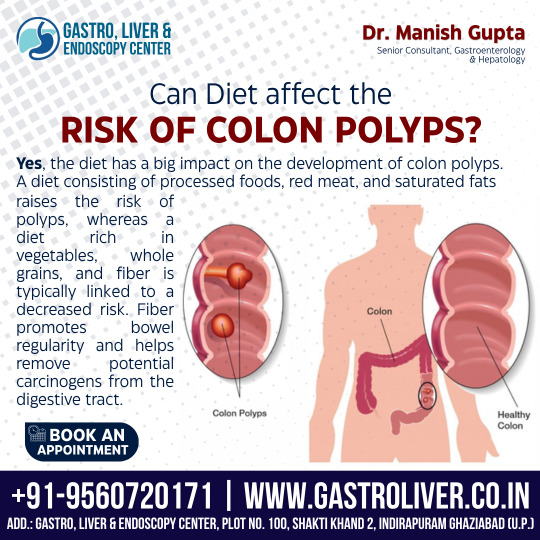
Can Diet affect the risk of Colon Polyps
Diet plays a crucial role in the development of colon polyps! A diet high in processed foods, red meat, and saturated fats increases the risk of polyps.On the other hand, a fiber-rich diet with vegetables, whole grains, and fruits is linked to a lower risk.✨ Why Fiber? Fiber promotes bowel regularity and flushes out potential carcinogens from the digestive tract, keeping your colon healthy!
Early detection save lives. Consult your gastroenterologist! 📍 Dr. Manish Kumar Gupta 👨⚕ Gastroenterologist, Liver Specialist & Endoscopist 🏥 Gastro, Liver & Endoscopy Center, plot no. 100, Shakti khand 2, Indirapuram Ghaziabad ☎ +91-9560720171 Website: https://gastroliver.co.in/ Review Us: https://g.page/r/Ca-LQMsvgGypEB0/review
#hyperacidity#swallowing#gastricpain#health#gastroproblems#drmanishgupta#delhincr#ghaziabad#uttarpradesh#india
0 notes
Text
0 notes
Text

Hyperacidity, or acid reflux, occurs when the stomach produces excess acid, leading to discomfort, heartburn, and indigestion. It can be triggered by dietary habits, stress, or other underlying conditions. Effective management includes lifestyle changes and medications. Sandu Hyperacidity Medicine offers a natural solution to alleviate symptoms, using herbal ingredients to neutralize stomach acid and promote digestive health. For those seeking a holistic approach, Sandu Hyperacidity Medicine provides relief without the side effects often associated with conventional treatments. Maintaining a balanced diet and regular exercise can also support the effectiveness of these remedies.
0 notes
Text
How to get rid of heartburn?
How to get rid of heartburn? Do you suffer from heartburn?Do you know the best way to treat this problem? Remember when you were young and could eat any food while standing on your head, but you didn’t have heartburn.As you get older after your teenage years, these stomach acids start to get diluted and that’s why heartburn starts, when the stomach acids are too dilute, the muscle between the…

View On WordPress
#abdomen acid#apple wine vinegar#heartburn#hydrochloric acid#hyperacidity#treat heartburn#treatment#triple hcl
0 notes
Text

she is actually the very bestest girl on the planet earth
#the bear fx#sydney adamu#ayo edebiri#the bear season 2#she is for the hyperacidic heartburn stomach ulcer having girlies
930 notes
·
View notes
Text



Feeding stray cats 猫.
Cats should be fed twice a day. If more than 12 hours elapses between meals, the stomach can become hyperacidic causing nausea.
📸 Shot on flagship iPhone 14 Pro ($1000) vs midranger Vivo V40 5G with Zeiss Optics ($370) vs entry-level budget Vivo iQOOZ9x 5G ($150).
Which picture do you prefer?
#smartphone #photography #photo #picture #photographer
#cats#猫#cat feeding#hyperacid#nausea#flagship#apple#iPhone#iPhone 14 Pro#vivo v40#vivo#iqoo#iqoo z9x#picture#photo#smartphone#photography#photographer#photographers
2 notes
·
View notes
Text
#Amlamukt#Ayurvedic tablets#hyperacidity relief#heartburn medicine#gas relief#acid reflux#digestion support#herbal remedy#stomach care#gastric ulcers#indigestion relief#natural antacid#Bio Resurge#Indian herbal medicine#stomach health supplement
0 notes
Text
Experience Comfort with Chai Superfood Coffee Alternative 12oz Bag (Caffeine-Free)
Chai isn’t just a drink—it’s a journey into a rich tradition filled with soothing flavors and incredible health benefits. Originating in India, chai is cherished for its ability to warm the soul and calm the body. If you’re looking for a caffeine-free drink that’s gentle on the stomach yet bursting with flavor, the Chai Superfood Coffee Alternative 12oz Bag is your perfect match! This blend of roasted figs and aromatic chai spices offers a delightful escape from the daily grind.
Our unique twist? The roasted figs, which add natural sweetness and make this chai completely caffeine-free. Each sip delivers a burst of warm spices while nurturing your well-being. Dive into this enchanting chai experience and enjoy a flavor you won’t want to miss!
How To Make The Perfect Chai Superfood Coffee
What makes our Chai Superfood Coffee Alternative special? It all comes down to the amazing ingredients we’ve chosen, each adding its own flavor and health perks:
Organic roasted figs: Naturally sweet and help with acidity.
Turmeric: Great for reducing inflammation.
Ginger: Supports digestion.
Cinnamon: Helps keep your blood sugar in check.
Cardamom: Adds a lovely aromatic touch.
Black pepper & cloves: Bring warmth and richness to the chai flavor.
A Jitter-Free Comfort for Any Time of Day
Unlike traditional coffee, our chai provides all the comforting flavors without any jitters or acidity, making it the perfect way to unwind after a long day. Whether you start your morning with a warm cup, take a break in the afternoon, or enjoy it as a cozy evening treat, it fits seamlessly into your daily routine. To make the perfect cup, just mix one tablespoon of the blend with hot water or your favorite non-dairy milk, stir, and enjoy the warm aroma of spices filling your space.
Easy, Affordable Shipping & Wellness in Every Sip
At FigBrew, we make ordering easy and affordable. While free shipping isn't available on everything, we subsidize shipping costs and select the best method—whether it's USPS, UPS, or FedEx. For international orders, reach out to us at [email protected], and we’ll take care of the details.
Ready to enjoy a comforting, feel-good drink? The Chai Superfood Coffee Alternative 12oz Bag is perfect for those managing hyperacidity, offering a cozy, caffeine-free option that nourishes both body and soul. Order yours today at FigBrew, or call us at 256-617-3105, and savor the warmth and wellness in every sip!
0 notes
Text

Fight GERD and Hyperacidity | Dr Monga Clinic
Discover relief from hyperacidity and GERD in Delhi at Dr. Monga Clinic. Our specialized treatments offer a path to digestive wellness, tailored to your needs. With expert care and personalized solutions, we address the root causes of your discomfort, ensuring long-term relief. Take the first step towards reclaiming your digestive health today +91-8010931122. Visit Our Website :- https://drmongaclinic.com/acidity-treatment.html
0 notes
Text


Curious about the ERCP procedure?
If You Have any Gastric, Intestinal, or Liver Problems.
Consult with your gastroenterologist and get done Endoscopic Ultrasound. Contact Us: 📍 Dr. Manish Kumar Gupta 👨⚕ Gastroenterologist, Liver Specialist & Endoscopist 🏥 Gastro, Liver & Endoscopy Center, plot no. 100, Shakti khand 2, Indirapuram Ghaziabad ☎ +91-9560720171 Website: https://gastroliver.co.in/ Review Us: https://g.page/r/Ca-LQMsvgGypEB0/review
#hyperacidity#swallowing#gastricpain#health#gastroproblems#drmanishgupta#delhincr#ghaziabad#uttarpradesh#india
0 notes
Text
He suffered an onslaught of insomnia. His physical strength began to fade as well. The doctors gave him various diagnoses - gastric hyperacidity, gastric atony, dry pleurisy, neurasthenia, chronic conjunctivitis, brain fatigue … But he knew well enough what was wrong with him: he was ashamed of himself and afraid of them - afraid of the society he so despised.
Akutagawa Ryūnosuke, “The Life of a Stupid Man” from Rasōmon and Seventeen Other Stories

91 notes
·
View notes
Text

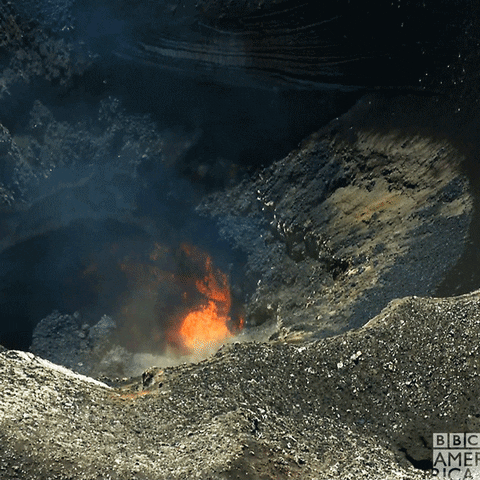
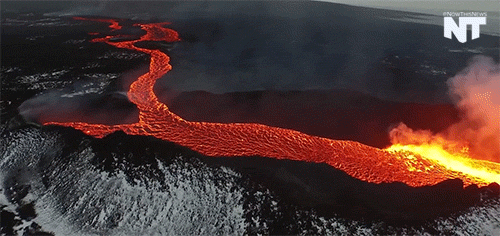
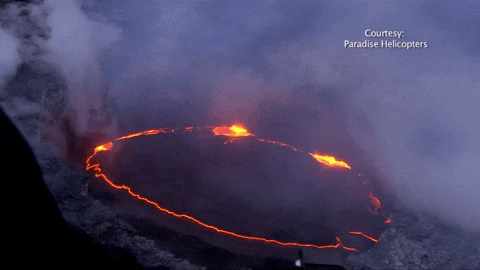

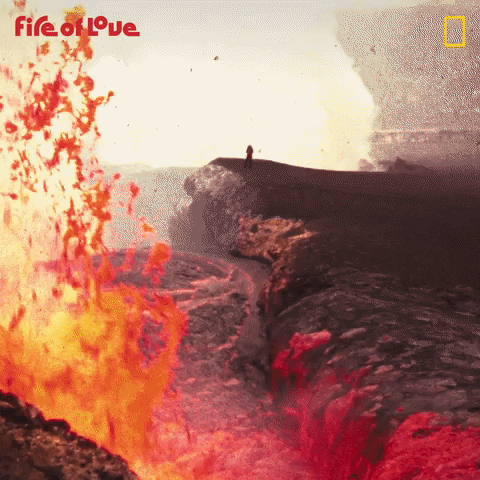

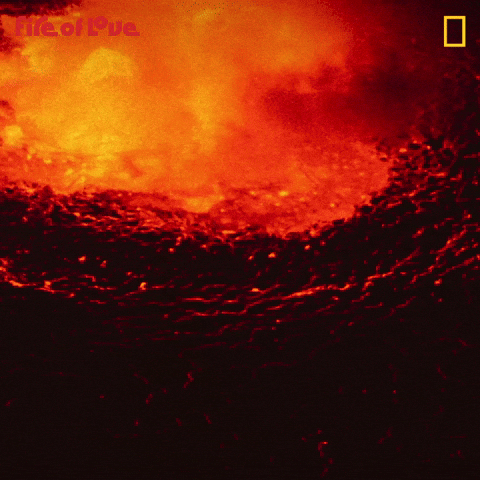

The evolutionary trajectory of life on Earth has consistently challenged preconceived notions regarding the boundaries of biological viability. From the abyssal depths where chemosynthetic ecosystems flourish in the absence of solar radiation, to the hyperacidic geothermal springs where extremophiles exploit sulfur-based metabolic pathways, to the radiologically contaminated zones where fungal organisms appear to harness ionizing radiation through melanin-mediated processes, life has demonstrated remarkable plasticity in colonizing environments previously deemed sterile. This paradigmatic expansion of the habitable envelope naturally raises a provocative question: if biological systems can withstand the vacuum of space, lethal radiation doses, and corrosive chemical matrices, what fundamental constraints preclude the existence of life within molten silicate matrices—commonly known as lava?
Distinguishing Extreme Environments from Thermodynamically Prohibitive Conditions
To address this question rigorously, it is essential to establish a clear demarcation between environments that impose severe physiological stress and those that fundamentally disrupt molecular architecture. Lava represents molten silicate material with temperatures typically ranging from 973 to 1473 Kelvin (700°C to 1,200°C or 1,292°F to 2,192°F), creating conditions that exceed the thermal stability thresholds of all known biomolecules. This temperature regime does not merely stress biological systems—it induces catastrophic molecular dissociation and structural denaturation.
The thermodynamic reality of molten rock environments differs qualitatively from other extreme conditions. While ionizing radiation can cause DNA strand breaks that are potentially repairable through enzymatic mechanisms, and vacuum conditions can be survived through cryptobiotic states that suspend metabolic activity, the thermal energy present in lava fundamentally disrupts the covalent bonds that maintain molecular integrity. This represents a transition from survivable stress to inevitable molecular decomposition.
Biochemical Constraints of Carbon-Based Life
Contemporary terrestrial biology operates within a relatively narrow thermodynamic window defined by the stability of carbon-hydrogen bonds, phosphodiester linkages in nucleic acids, and the hydrophobic interactions that stabilize protein tertiary structure. Even the most thermoresistant extremophiles operate within these fundamental constraints. Methanopyrus kandleri, representing the current temperature record-holder among hyperthermophiles, maintains viability at 395 Kelvin (122°C) through specialized heat-shock proteins and thermostable enzyme variants, yet remains orders of magnitude below lava temperatures.
The molecular basis of this limitation is well-characterized. DNA undergoes thermal denaturation at approximately 368 Kelvin (95°C) under physiological conditions, while cell membrane phospholipids experience phase transitions that compromise barrier function well below 423 Kelvin (150°C). Even the most thermostable proteins, such as those found in hyperthermophilic archaea, lose catalytic function at temperatures that represent merely the lower bounds of molten rock environments.
However, this analysis is predicated upon the assumption that life universally adheres to terrestrial biochemical paradigms. The emerging field of astrobiology has increasingly challenged anthropocentric definitions of biological possibility, suggesting that alternative bio-chemistries might operate under fundamentally different thermodynamic constraints.
Alternative Biochemical Frameworks and Exotic Life Scenarios
The potential for non-carbon-based life has garnered serious consideration within the astrobiological community, particularly regarding silicon-based biochemistry. Silicon, sharing carbon's tetravalent bonding capacity, theoretically enables the formation of complex molecular architectures while potentially offering superior thermal stability. Silicon-oxygen bonds (Si-O) possess higher bond dissociation energies compared to carbon-hydrogen bonds, suggesting that silicon-based polymers might maintain structural integrity at elevated temperatures. However, silicon chemistry also presents significant limitations, including reduced structural flexibility and a tendency toward crystallization rather than the formation of dynamic, self-organizing systems characteristic of carbon-based life.
Beyond alternative elemental foundations, theoretical frameworks have been proposed for organisms incorporating inorganic protective matrices. Terrestrial precedent exists in biomineralizing organisms such as magnetotactic bacteria, which precipitate magnetite nanoparticles, and diatoms, which construct intricate silica frustules. Extrapolating from these examples, hypothetical organisms might evolve refractory ceramic or metallic shells capable of providing thermal insulation against extreme temperature gradients.
Recent discoveries have expanded our understanding of extremophile capabilities in ways that inform this discussion. The identification of radiotrophic fungi in the Chernobyl Exclusion Zone, which appear to metabolize ionizing radiation through melanin-mediated electron transport chains, demonstrates that life can not only survive but potentially thrive by exploiting energy sources previously considered universally destructive. Similarly, the rapid evolution of plastic-metabolizing bacteria in marine environments illustrates the remarkable adaptability of biological systems to novel chemical landscapes.
Transient Survivability and Cryptobiotic Strategies
A more plausible scenario for life's interaction with lava environments involves transient rather than permanent exposure. Many extremophiles employ cryptobiotic strategies—reversible metabolic suspension coupled with enhanced molecular protection—to survive otherwise lethal conditions. Tardigrades exemplify this approach, entering a desiccated "tun" state while producing damage-suppressing proteins and trehalose disaccharides that stabilize cellular structures during cryptobiosis.
Bacterial endospores represent perhaps the most relevant analogue for potential lava survival. These dormant structures, surrounded by multiple protective coats including calcium dipicolinate deposits, can withstand temperatures exceeding 393 Kelvin (120°C) for extended periods. Theoretical extensions of this strategy might enable organisms to survive brief transits through molten environments while in extreme cryptobiotic states, potentially reactivating within cooling lava tubes or solidified volcanic substrates rich in chemically accessible minerals.
Microenvironmental Niches and Thermal Gradients
The assumption that lava presents a uniformly lethal environment may itself be overly simplistic. Volcanic systems create complex thermal gradients with numerous microenvironments that might fall within the expanded tolerance ranges of extremophile organisms. Lava tubes, formed by the drainage of molten rock from beneath solidified crusts, can maintain moderate temperatures while providing access to mineral-rich substrates and potentially reducing atmospheric conditions. Similarly, the interfaces between active lava flows and ambient environments create steep thermal gradients where temperatures might transitionally approach the upper limits of hyperthermophile tolerance.
Subglacial volcanic systems present particularly intriguing possibilities. In these environments, the interaction between molten rock and ice creates complex thermal and chemical gradients, potentially generating microenvironments with temperatures compatible with extremophile survival while providing access to both oxidized and reduced chemical species for metabolic exploitation.
Geochemical Considerations and Deep Crustal Environments
The boundary between "lava" and "hot rock" is not merely semantic but reflects important distinctions in habitability potential. While actively molten rock exceeds known biological tolerance limits, the cooling and crystallization process creates a continuum of environments with varying thermal and chemical properties. Recent investigations of deep crustal microbial communities have revealed active biological processes at depths exceeding 5 kilometers, where temperatures approach 353 Kelvin (80°C) and pressure exceeds 50 megapascals.
These discoveries suggest that the transition zone between molten and solid rock—the crystallization front—might represent a previously unconsidered habitat. As cooling magma transitions from liquid to solid phases, it creates chemical gradients, gas evolution, and mineral precipitation that could potentially support specialized extremophile communities adapted to exploit these dynamic geochemical processes.
Synthesis and Future Directions
While current thermodynamic principles and biochemical knowledge suggest that conventional carbon-based life cannot maintain active metabolism within actively molten silicate environments, several theoretical pathways remain unexplored. These include:
alternative biochemistries operating at elevated temperature ranges
cryptobiotic survival strategies enabling transient exposure to extreme thermal conditions
exploitation of microenvironmental niches within complex volcanic systems
The question of life's ultimate temperature limits intersects with broader philosophical issues regarding the universality of terrestrial biochemical paradigms. As astrobiology continues to expand our conception of habitable environments—from the methane lakes of Titan to the sulfuric acid clouds of Venus to the subsurface oceans of Europa and Enceladus—the dismissal of any extreme environment as definitively uninhabitable requires increasingly rigorous justification.
The emerging understanding that life can exploit energy sources as diverse as ionizing radiation, methane seepage, and hydrogen sulfide suggests that our current models of biological impossibility may be overly conservative. While the direct colonization of actively molten rock remains highly improbable given known biochemical constraints, the complex thermal, chemical, and physical gradients associated with volcanic systems present numerous opportunities for life to approach—and potentially breach—previously assumed thermodynamic boundaries.
Future investigations might profitably focus on the systematic characterization of thermal gradients within volcanic systems, the laboratory evolution of hyperthermophile organisms under progressively elevated temperature regimes, and the theoretical modeling of alternative biochemistries capable of maintaining functionality at extreme temperatures. As our understanding of life's fundamental limits continues to evolve, the boundary between the possible and impossible remains not fixed, but perpetually expanding.
The ultimate question may not be whether life can survive in lava, but rather how closely life can approach the thermodynamic limits of molecular stability—and what new definitions of "life" might emerge from these investigations.
#lava#eruption#volcanoes#extremophiles#astrobiology#lava and life#life in extreme environments#noncarbon based life#science speculation#limits of life#thermophiles#what if biology#lava microbes#science writing#volcano science#origin of life#space biology#biochemistry#alien life theory#microbial survival#astrogeology#scientific curiosity#uncharted biology#frontiers of science#science and wonder#life always finds a way#science#gifs#stim gifs#lava stim
11 notes
·
View notes
Text
Buy Ayurvedic Tonic for Hyperacidity
Sandu Bhunimbadi Kadha: Ayurvedic remedy for Hyperacidity. Explore the benefits of bhunimbadi kadha for pain & burning sensation in the stomach
0 notes
Note
Ugh, my tummy hurts and I'm hyperacidic. Anyways I think I'm in love with Jakob.
get well soon
10 notes
·
View notes
Text
How I am and how I wish I'd be


Actually I don't think it's flu. I don't know what it is (but I'm glad it isn't worse, thanks vaccines! I think?) but it sure is something. Or somethings bc all in all this week I had: menstrual cramps‚ menstrual insomnia + stronger insomnia that comes and goes sometimes‚ strong cold and sinusitis plus usual stomach nuisances from hyperacidity. And cfs of course. Which isn't kicking my butt, that has to be said, and I'm very grateful for it. And ofc I forgor the meds recipe from the doctor these past days cause I kept remembering at all the wrong hours, so no pantoprazolo for me (I've got something else thankfully but it's a tad inconvenient cause it doesn't work as well). BUT! yesterday I met my fave nurse which I hadn't met in some months and she's super nice and hilarious so that was pretty good.
Sorry for this I needed to complain or else I chew someone's limb off
The christmas-eve-mysterious-illness-fit is 80% wool 🐑
#sinusitis is a bit better but until I'm completely free of it the hat stays#uuuuuugggghhhh if it's the stomach instead‚ again‚ idk what I'm gonna do#personal
7 notes
·
View notes